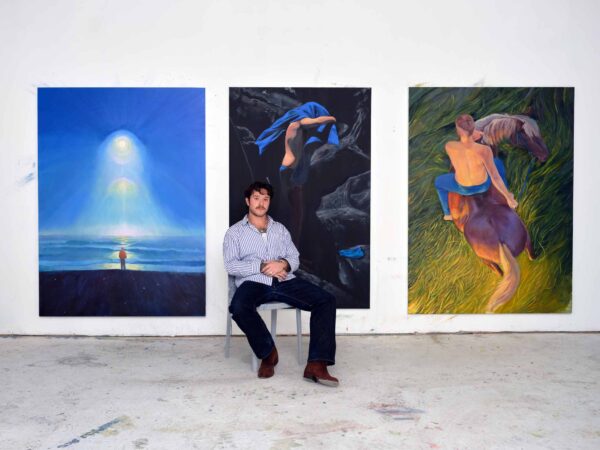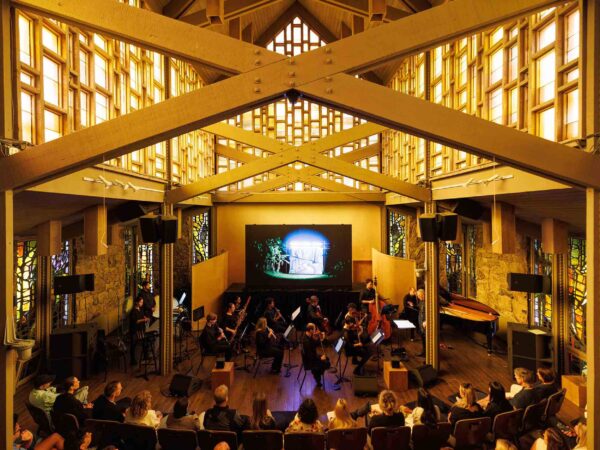
In 'A. Garden', the artist and curator brings together performers working across disciplines to imagine joy, ecology, and resistance as shared ground
Tara-Jo Tashna is an artist whose work—spanning performance, music, and political research—is anchored by a persistent curiosity about how we live together. While her practice moves fluidly across disciplines, what defines it isn’t just the mediums she works in, but the questions she keeps returning to: those of collectivity, intimacy, and the architectures—both sonic and social—that hold us. She often works collaboratively and engages the natural world—for example, in her piece The Wash, part of the 2017 BOFFO Performance Festival, which choreographed a ritual of coming together on the beach in the Fire Island Pines, a creative exchange with performer-friends DeVonn Francis and Aaron Ricks.
While Tashna’s performance résumé is extensive—including presentations at the Guggenheim, Mana Contemporary, and MoMA PS1—her latest endeavor spotlights other artists, all of whom, like Tashna, are hard to categorize: working in and across dance, performance, music, and poetry. The lineup includes Lake Dorn, YATTA, and Keith N’Dong. The lush, sensorial evening at Performance Space New York on Thursday June 12 also features a live installation by Neda Mouzayanni. We caught up with Tashna to learn more about the curatorial concept behind the unique program she’s anointed A. Garden. While we’ve inherited a deeply broken world, Tashna is interested in how we can make space for playful expressions of joy and how they can be part of resistance, regeneration, and reprieve.
Where does the name for the performance come from?
I was inspired by the idea of a forest bath or nature walk. The “A.” in A. Garden stands for “Anthrophony,” which means human-made sound. This auditory garden encourages us to blur the distinctions between human and nature.
Are there larger ideas and experiences of ecology that informed the project?
For the past two years, I was enrolled at Bard as a non-traditional student studying Politics. I was doing a lot of research about Jamaica, getting to a deeper understanding of its economic and political circumstances. During this research, I learned how integral its agricultural sector is. When I visited Jamaica for a month last summer—my longest trip back since I left at six—I met two incredible people working on rematriation projects: Source Farm and Solidarity Yaad. Nicola of Source Farm was born in Jamaica and moved back after closing a Jamaican restaurant in Philly. Both farms I visited were run by badass older Jamaicans who had left for some time and returned to build community and produce meaningful work
In the midst of thinking about our intricate relationships with the more-than-human world—about the constant destruction and devastation amidst this beautiful, resilient earth—it’s becoming more difficult to deny that we and all things are inextricably linked. For the past two years, I’ve delved into research surrounding the earth that birthed me. All paths, all routes to rebuilding, bring me right back to the land and the soil—first worn down by the plantation economy. While reflecting on rematriation and the possibilities of decolonial futures, I consider the growing polarities. Driving through Manchester, looking out and seeing the mountains in the distance, you find, in the foreground, toxic molten red pools of bauxite tailings. Being among the trees in Jamaica and hearing the natural world all around, you can immediately turn a corner and hear dancehall blaring from a small roadside shop—lined with Ting, rum, Red Stripe, Cheese Trix, and an assortment of snacks, drinks, and small household items. There’s a constant reckoning with nature and the things we’ve cultivated within it, resulting in a deeper understanding of our interconnectedness.
What’s your first memory of a garden?
In Manchester, Jamaica—where I was born—I lived in the bushes surrounded by trees. My uncle was a farmer, growing food and tending the pigs. I remember my mama (my grandmother) killing a chicken, it hanging by its ankles, we cooked outside over coal, I bathed in a galvanized tin tub in the yard. This was my first garden. It was beautiful and rough and imperfect, but we were provided with fruit trees and a concrete water tank.





















